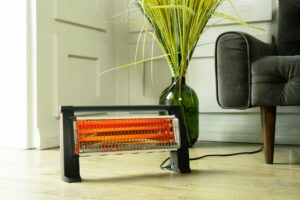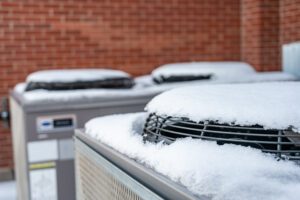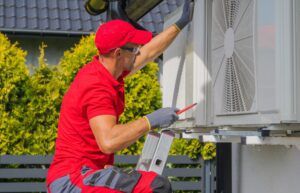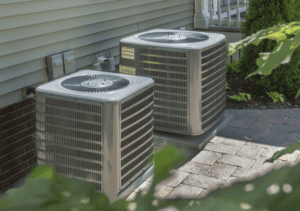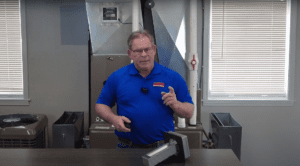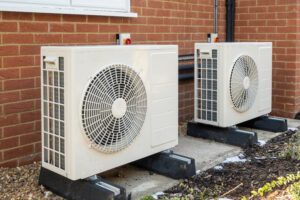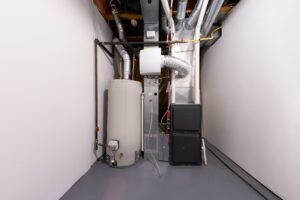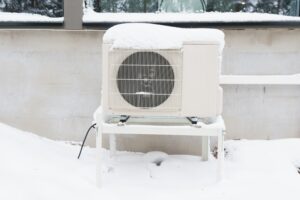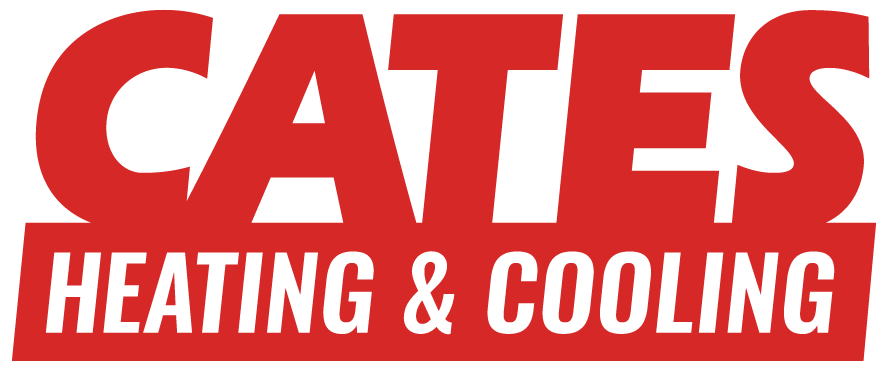Question: If you had to live without TV or air conditioning, which one would you choose? We know your answer if you have to deal with the muggy Midwest summers. Air conditioning as we know it was first invented in 1902 by Willis Carrier, and by all accounts, every homeowner should have a comfort shrine dedicated to Mr. Carrier. Since air conditioning is somewhat taken for granted in the developed world, we think it makes sense to gain a fundamental understanding of how it works, why it fails, and what can be done to ensure its maximum efficiency and life.
How it Works
An air conditioning system works by moving heat from an inside location to an outside location. To cool your home, heat is absorbed by an evaporator coil located in the supply air of the HVAC system. Heat collected indoors is removed outdoors by a device called the condenser coil located in the AC unit outside. If you have ever put your hand over an air conditioner in the summer and felt the hot air, that in large part is heat transferring outside from inside. Any dirt, restriction or compromised air flow on either of these coils will adversely affect the transfer of heat and cooling capacity. Refrigerant is the special liquid that carries the heat outside collected inside from the evaporator coil. The refrigerant leaving the evaporator and returning to compressor is in a vapor state. Refrigerant vapor is compressed into a high pressure gas and is then condensed into a liquid in the condenser. At this point liquid refrigerant is fed to a metering device that feeds it into the evaporator coil at a reduced pressure. Reducing the pressure causes the refrigerant to boil off, absorbing heat. This continuous cycle is how heat from your house is removed and released outside.
- Cooling is removing heat from one location (inside) and rejecting it in another (outside).
- Condenser Coil (outside in AC) rejects heat, condenses refrigerant back to a liquid
- Evaporator (inside above the furnace or in air handler) boils off refrigerant inside absorbing heat
- Compressor (outside in AC) compresses low-pressure vapor to a high-pressure gas to be condensed in the condenser back to liquid
- Metering Device (on evaporator coil ) reduces pressure of liquid refrigerant causing it to boil in the evaporator coil, absorbing heat from the air flow of the blower.
What Can Go Wrong
Air conditioners are highly complex mechanical systems. Sizes vary to meet what’s called a load. The refrigerant needs to be a specific level, otherwise known as the charge. Air flow always needs to be adequate across the evaporator and condenser coils. If any of these vary too greatly, your air conditioning will have issues.
Let’s say you have a dinner party. You are using the oven, KitchenAid mixer, and stove to prepare your favorite dish. Fifteen people show up at roughly the same and while cocktail hour may be getting started, an all-too-familiar feeling that the air conditioning cannot catch up takes over. This can be attributed to insufficient capacity.
Another common issue is a refrigerant leak, which lessens the ability to remove heat from the air, resulting in higher temperatures.
Finally, if your condenser coil (outside) is dirty, it will affect air flow and diminish its capacity to remove heat. Throw in another factor for humidity and you can see how these interrelated variables can lead to issues.
Improving Efficiency
Here are the keys to improving the efficiency of your air conditioner
1) Get Your Ducts in a Row – According to ASHRAE (American Society of Heating, Refrigerating, Air Conditioning Engineers), duct leakage can zap 20-40% of the energy out of even well-producing units. Sealing leaky ducts is one of the most effective ways to improve efficiency.
2) Replace Filters – Dirty filters reduce air flow and system performance. If they get too dirty, they may become a source of air pollution within your home. The kind of filter and frequency of replacement varies, so check with your technician on your next service call.
3) Keep the Right Charge -Annually checking refrigerant levels is key to optimum performance. Any leakages will affect cooling capabilities.
4) Clean the Coils – The outside condenser coil is subject to Mother Nature and over time will start to build up air flow roadblocks such as leaves, dust, insects, etc. Ensuring the coil is cleaned and far enough away from the home for proper air flow is critical to optimum performance.
Now you know the basics of how air conditioning works, what can go wrong, and how to improve efficiency. We hope that next time you enter a cooled room after doing yard work in 90 degree heat, you’lll have a better appreciation for the modern miracle we know as air conditioning.


